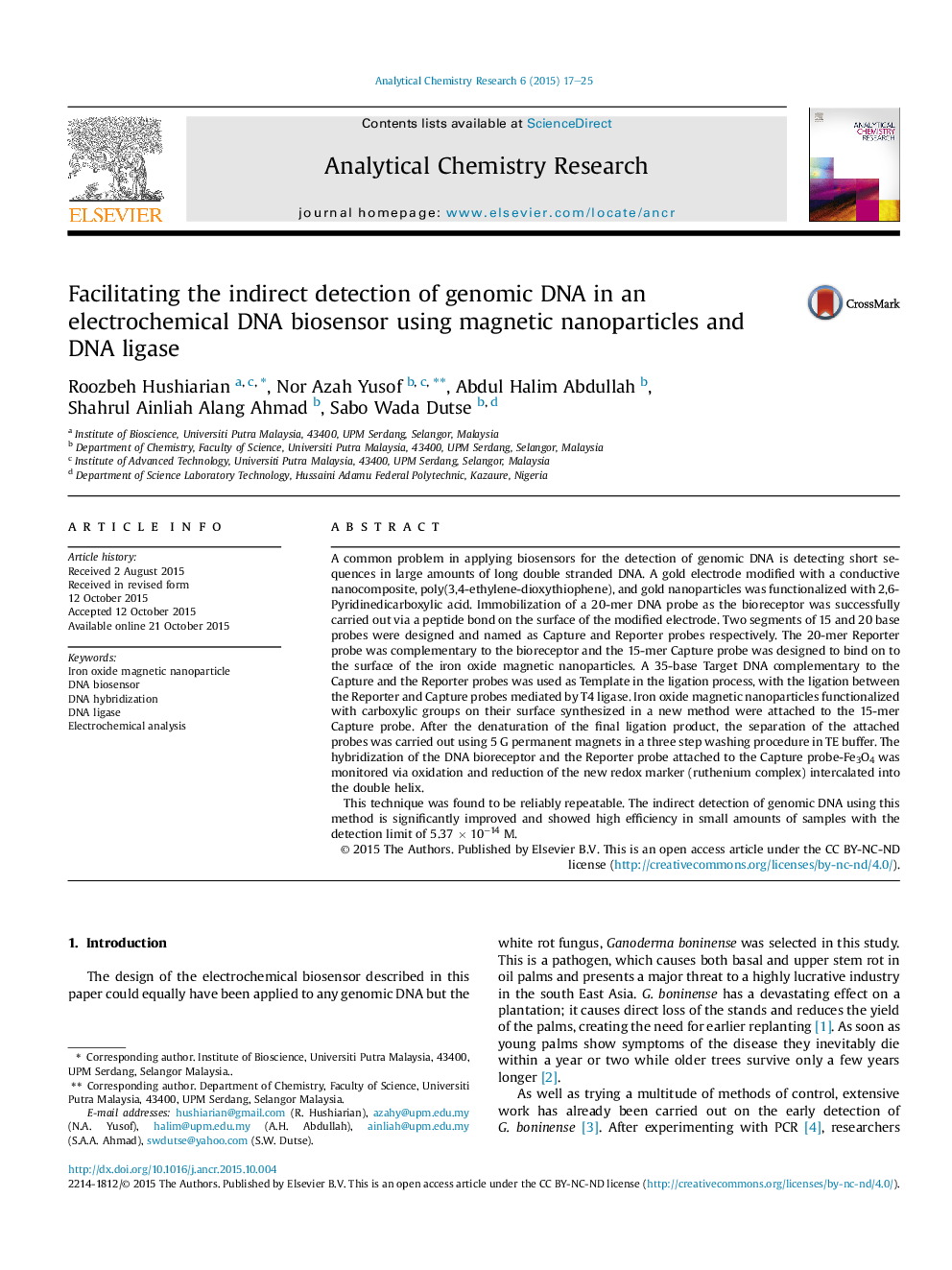| Article ID | Journal | Published Year | Pages | File Type |
|---|---|---|---|---|
| 1177768 | Analytical Chemistry Research | 2015 | 9 Pages |
•The constructed biosensor was able to detect the extracted genomic DNA indirectly.•The ligase together with MNPs facilitated bringing representative samples to the biorecognition site.•The system was found to be highly selective by differentiating complementary and mismatched samples.
A common problem in applying biosensors for the detection of genomic DNA is detecting short sequences in large amounts of long double stranded DNA. A gold electrode modified with a conductive nanocomposite, poly(3,4-ethylene-dioxythiophene), and gold nanoparticles was functionalized with 2,6-Pyridinedicarboxylic acid. Immobilization of a 20-mer DNA probe as the bioreceptor was successfully carried out via a peptide bond on the surface of the modified electrode. Two segments of 15 and 20 base probes were designed and named as Capture and Reporter probes respectively. The 20-mer Reporter probe was complementary to the bioreceptor and the 15-mer Capture probe was designed to bind on to the surface of the iron oxide magnetic nanoparticles. A 35-base Target DNA complementary to the Capture and the Reporter probes was used as Template in the ligation process, with the ligation between the Reporter and Capture probes mediated by T4 ligase. Iron oxide magnetic nanoparticles functionalized with carboxylic groups on their surface synthesized in a new method were attached to the 15-mer Capture probe. After the denaturation of the final ligation product, the separation of the attached probes was carried out using 5 G permanent magnets in a three step washing procedure in TE buffer. The hybridization of the DNA bioreceptor and the Reporter probe attached to the Capture probe-Fe3O4 was monitored via oxidation and reduction of the new redox marker (ruthenium complex) intercalated into the double helix.This technique was found to be reliably repeatable. The indirect detection of genomic DNA using this method is significantly improved and showed high efficiency in small amounts of samples with the detection limit of 5.37 × 10−14 M.
Graphical abstractFigure optionsDownload full-size imageDownload as PowerPoint slide
